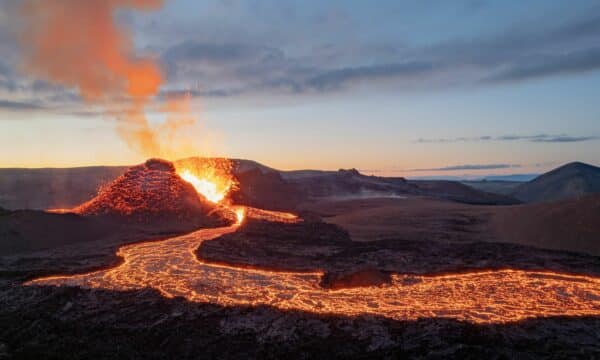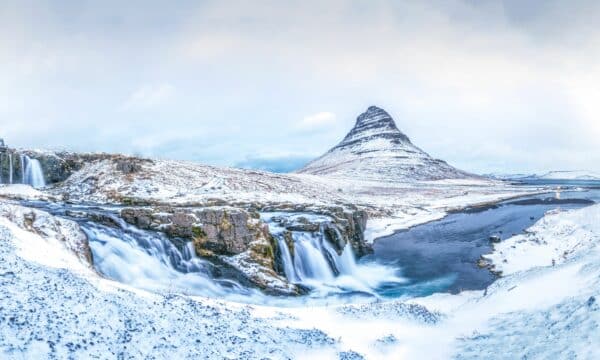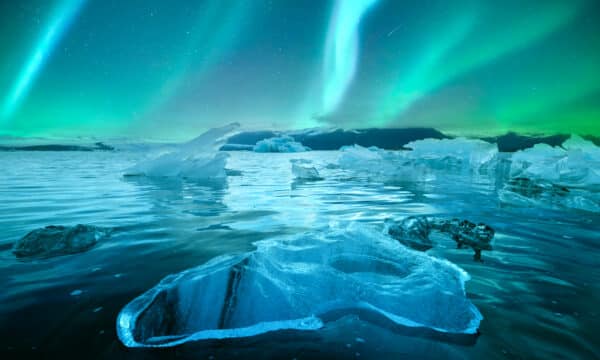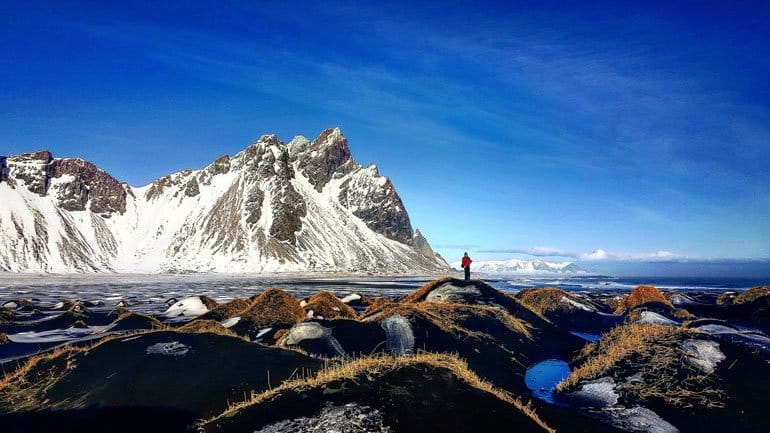
Despite being a fairly green and temperate European nation during the summer, the winter truly sees Iceland live up to its name.
It’s black volcanic landscapes, and lush open meadows will become blanketed in a thick layer of snow, creating a virginal Arctic vista that portrays the island in a wholly new, yet equally beautiful light.
- Planning on visiting Iceland in the winter? See our selection of Winter Holiday Packages
Of course, light is something that the winter in Iceland is very short of.
In fact, in the deepest depths of the winter season, visitors and locals alike will experience no more than a few hours of dim light every day.
Iceland in the Summer VS Iceland in the Winter
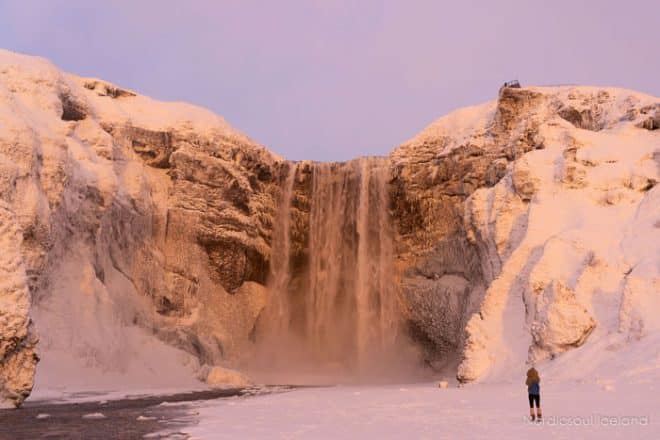
Those visiting Iceland in the winter can expect snowfall, dark days and such brilliant natural attractions as the Northern Lights and ice caves.
Alternatively, those travelling in summer will experience a wealth of daylight hours under the Midnight Sun, as well as a black and green landscape untempered by ice and snow.
In many ways, Iceland can be considered two entirely different countries, depending on the season.
(They don’t call it the Land of Ice and Fire for nothing, after all.)
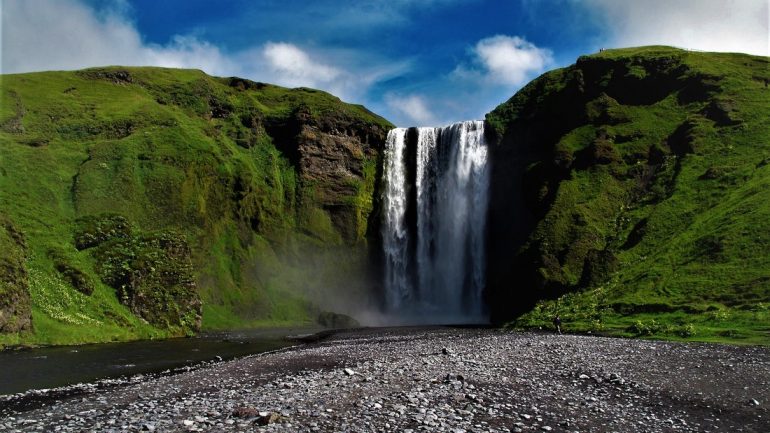
As such, seasonal travellers are almost always recommended to make a return trip to Iceland in the future so as to experience these differences themselves.
This dramatic, seasonal shift in temperature and aesthetic is clearly visible today, as it has always been. The earliest settlers, who arrived on the island around 870 CE, divided the year into only two seasons, rather than four.
How long are Winters in Iceland?
According to the Icelandic Meteorological Office, the winter in Iceland lasts for four months, from the 1st of December until the 31st of March.
This is different from the rest of the world where winter lasts from December through February. March often brings cold winds and snow and is therefore rarely considered a winter month.
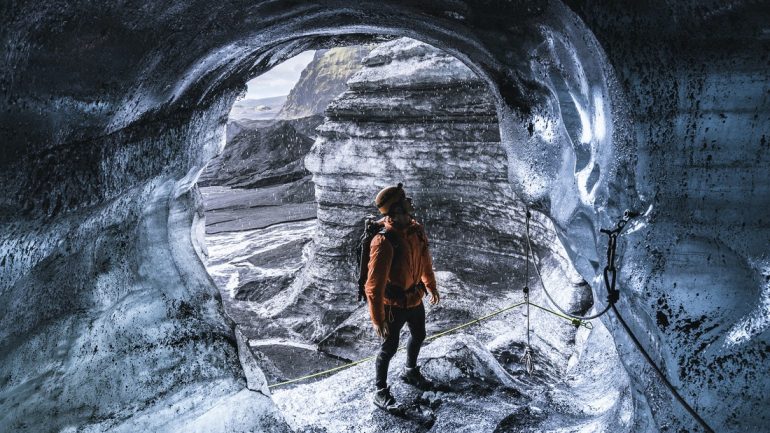
Similarly, the summer in Iceland is from the 1st of June until the 30th of September, according to the Met Office.
This designated period was initially just for clerical purposes, to make the winter and summer seasons equal in length.
- Check out our exciting Off the Beaten Path tours in Iceland
However, the weather in September both has summery and autumnal features.
The winter equinox is between the 20th – 23rd of December, while the summer equinox takes place between 20th – 22nd of June.
How Cold does Iceland get in the Winter?
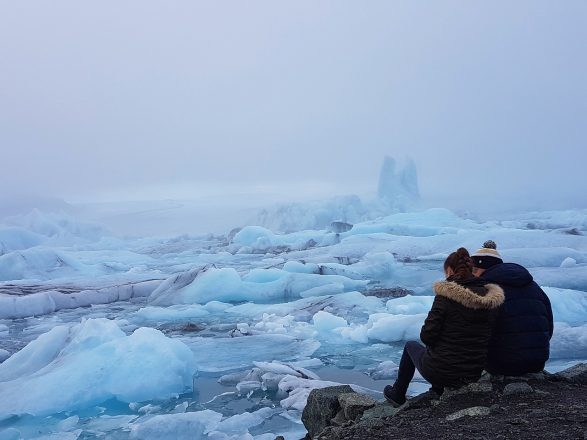
Iceland’s winter is not as cold as one might expect given its high latitude—just below the Arctic Circle.
Both the ocean temperature and the country’s proximity to the Gulf Stream create a relatively unstable climate, where the temperature can rise and drop dramatically at a moment’s notice.
This same warm ocean current provides relatively mild winters for Iceland’s latitude. The coldest months in Iceland are December and January, where the average temperature for the whole island drops below freezing.
However, there is a notable difference between each corner of the country.
Around the southern coastlines where the Gulf Stream has the most influence, winter temperatures in Iceland average around 0°C (32 °F). However, the deeper inland one goes, the colder the temperature drops.
This is especially true of the higher altitude mountains found within the Icelandic highlands, where temperatures can reach a foreboding -15 °C (5 °F) on average.
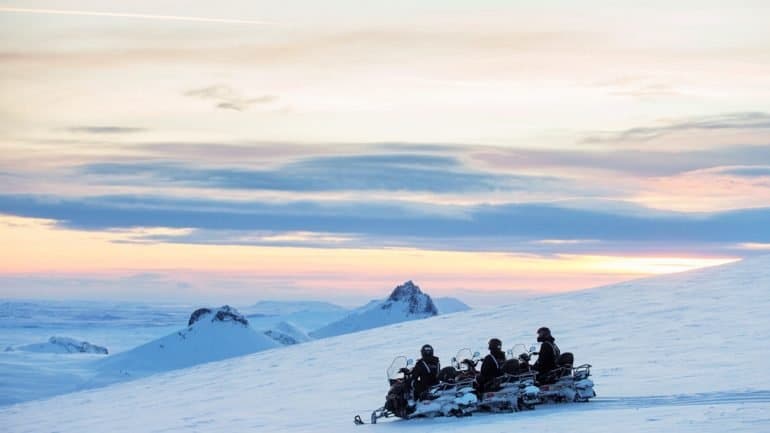
The warmest months in Iceland are July and August when the temperature averages around 10-13°C (50-55°F) in settled areas.
On warm summer days, the temperature can reach 20–25 °C (68–77 °F).
How much Snow does Iceland get in the Winter?
Snowfall in Iceland does not spread equally over the country.
According to the Icelandic Meteorological Office, there are approximately 60 days of the year where snow covers the streets of Reykjavík.
- Browse our whole selection of Iceland tours today
Overall, there are 80 days of the year where snow falls in the city, but much of this will melt upon hitting the ground.
In contrast, the northern town of Akureyri will have over 100 days of snowfall, of which around 97 days will see the ground completely covered in snow.
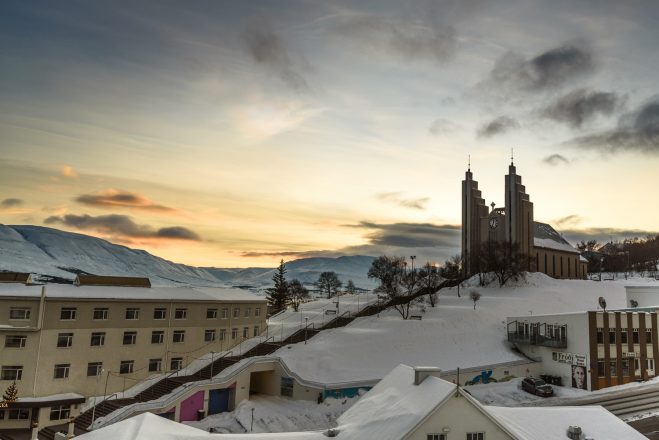
The most snowfall in Iceland occurs atop the country’s glaciers in the Highlands. It is most densely concentrated on the southern slopes of Mýrdalsjökull, Öræfajökull and Vatnajökull.
In the coastal regions, the heaviest snowfall is in the Westfjords, specifically by Súgandafjörður fjord and in the Strandir area.
According to the Met Office, the snowiest towns are Siglufjörður and Ólafsjörður in North Iceland.
Getting around Iceland in Winter
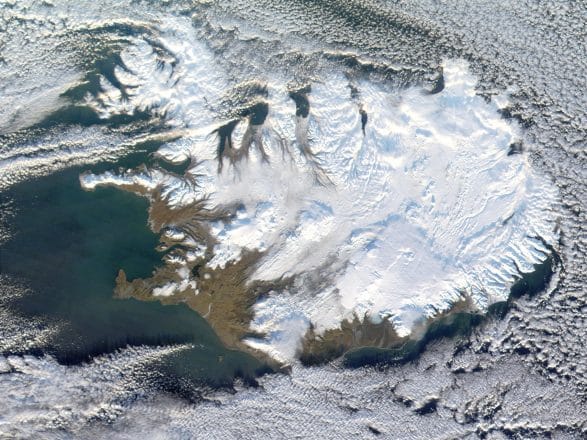
Iceland’s many stunning natural attractions are found all across the country, meaning that planning ahead is a necessity for those looking to maximise their experience.
There are three ways of getting around Iceland in the winter:
- Take a bus. However, as any local will tell you, the public transport system in Iceland is far from perfect, with frequent cancellations (especially in winter).
- Join a guided multi-day tour or package. Ideal for those who wish to avoid driving in snowy conditions, and you get the added benefit of a guide, as well as alternative routes if the roads are closed.
- Rent a vehicle.
For those taking their holiday into their hands, driving during Iceland’s winter poses extra considerations in its own right.
How to drive in Iceland in the winter
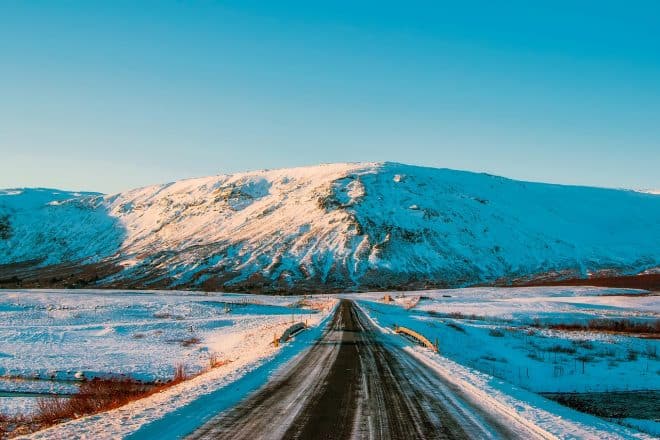
Driving in Iceland during the winter requires a deeper level of focus and attention as it means you’ll have to deal with snow, rain, sleet, ice, and strong winds. Such a task should only be handled by those comfortable and experienced behind the steering wheel.
If you do not feel confident enough to drive in these conditions, you should consider a guided tour instead. Not only will you be free of the hassle of driving, but you’ll also get insider information about each location you visit from your local guide.
When the snow is billowing, many travellers compare the experience to the famous Star Wars’ ship, the Millenium Falcon, as it blasts into hyperspeed. Such is the lack of the clear vision through the front window.
Roads being closed is another issue when driving around Iceland in the winter. Some, such as the roads that access the Highlands, will be totally inaccessible in the winter.
Iceland’s Ring Road—which circles the whole country and leads to Iceland’s most popular attractions—usually remains open throughout the year. However, certain sections of it may be closed temporarily when the weather is particularly bad.
The roads in the capital and larger towns are usually cleared a few hours after it snows. This doesn’t mean, though, that one shouldn’t be careful when driving in the city.
Winter tyres are legally required in Iceland from November 1st to April 14th. Your car should come equipped with winter tyres free of charge if you rent from an agency during this period.
When driving in the winter, it is important to always drive at a low safe speed. Be aware that the maximum speed assumes perfect road conditions, so if you are driving in the winter, you should always be at a slower speed.
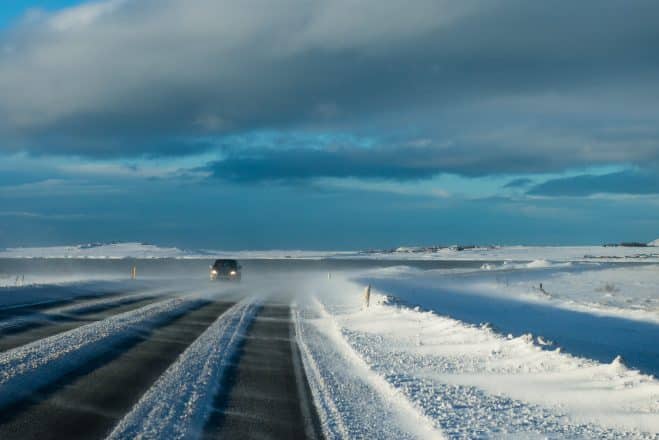
Also, remember to keep a good distance between yourself and the vehicle in front, as sudden braking is considerably less effective with less traction.
A good rule of thumb is to check both the weather and the road conditions before heading out.
If you have booked with an agency (such as Traveo) and the weather has forced you to alter your plans, one of our friendly agents will be more than happy to come up with fun-filled alternatives.
Top 6 Things to See & Do in Iceland in the Winter
Just because it’s dark and snowing outside doesn’t mean your holiday has to lack any of the fantastic and memorable experiences that have made Iceland one of the world’s top visitors destinations
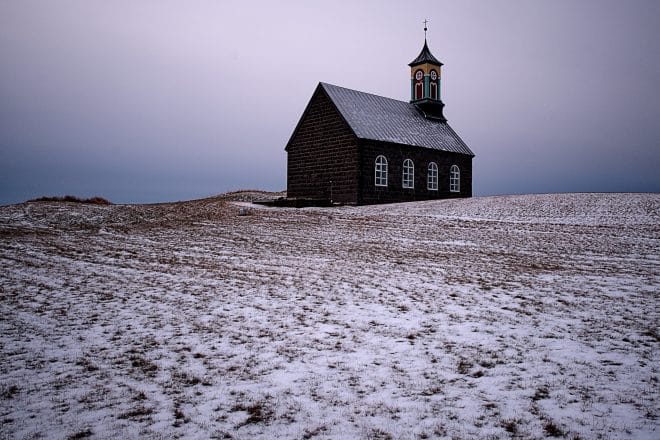
1. Iceland’s Golden Circle Sightseeing Route in the Winter
Iceland’s most popular sightseeing route is the Golden Circle and comprises three major attractions; Þingvellir National Park, Geysir geothermal valley and the mighty Gullfoss waterfall.
Þingvellir is a UNESCO World Heritage site, most famous as the birthplace of the world’s first democratically elected parliament, the Alþingi, which still operates today–albeit in Reykjavík.
- Learn more in The Best Things to See and Do on the Golden Circle | A Practical Guide to Iceland’s Most Popular Sightseeing Route
It is also where Icelanders chose en masse to convert from Norse paganism to Christianity.
In short, it has been, and continues to be, one of the most important places in Icelandic culture, and makes for a fantastic stop for travelling history buffs.
Nature-lovers will also find Þingvellir to be a unique and otherworldly national park quite unlike any found elsewhere around the world.
This is mainly due to its location in a vast continental no-man’s land commonly referred to as the Mid-Atlantic Rift. The rift is sandwiched between the North American and Eurasian tectonic plates which you can see exposed at Þingvellir.
During the winter, Þingvellir takes on a fantastic frozen hue with blankets of snow and frost covering the surrounding lava fields and the nearby Lake Þingvallavatn.
Here, you can partake in an unusual adventure: snorkelling. Though getting into glacial waters of Silfra fissure in the winter seems like an excursion only for the fool-hearted, the dry-suit you will be provided with will keep you warm.
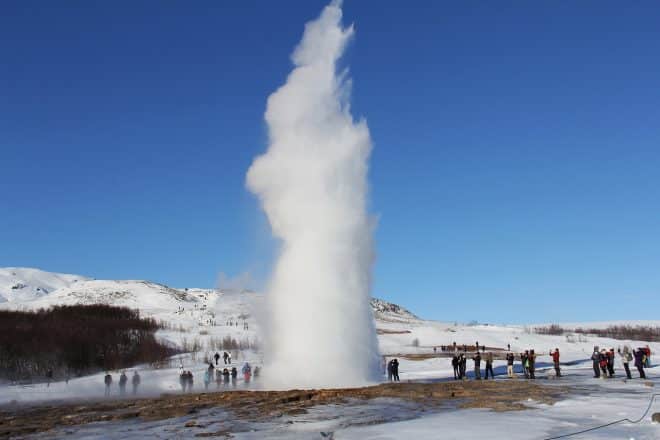
At Geysir valley, the snow has more difficulty settling with any permanence. This is thanks to the bubbling geothermal energy instantly visible on-site.
Aside from witnessing the many steaming hot pots and mud pools, guests mainly arrive to see the explosive Strokkur (“churn”).
This prominent hot spring is known to blast boiling water up to 15-20 metres in the area every 10 minutes or so. This stirring spectacle has become one of the country’s most photographed events, ensuring it’s a must-see on every traveller’s bucket list.
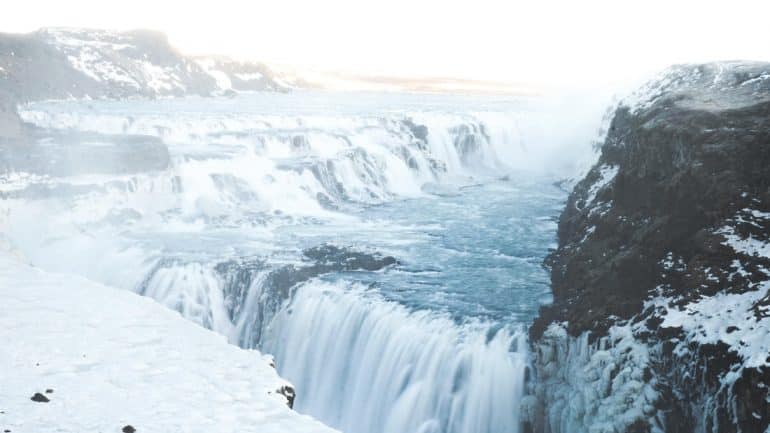
Gullfoss waterfall makes up the third and final component of the Golden Circle sightseeing route.
It is a truly magnificent feature which sees glacial water cascade over two rocky ‘steps’, dropping a total of 32 metres into a dark canyon below.
There are multiple viewpoints from which to observe Gullfoss surrounded by wintery beauty, so make sure to keep your camera at the ready.
2. Visiting Hot Springs & Spas in the Winter in Iceland
The tradition of bathing in natural baths and hot pots goes back to the initial settlement of Iceland.
Today, there are several luxury spas that have built upon this age-old practice, promising guests a truly rejuvenating and unforgettable experience surrounded by snow-laden nature.
Due to the ever-constant energy bubbling beneath the country’s volcanic surface, the option to visit geothermal spas is available both in the winter and summer.
There’s nothing that quite compares to dipping oneself into soothing warm waters while surrounded by Iceland’s epic landscapes.
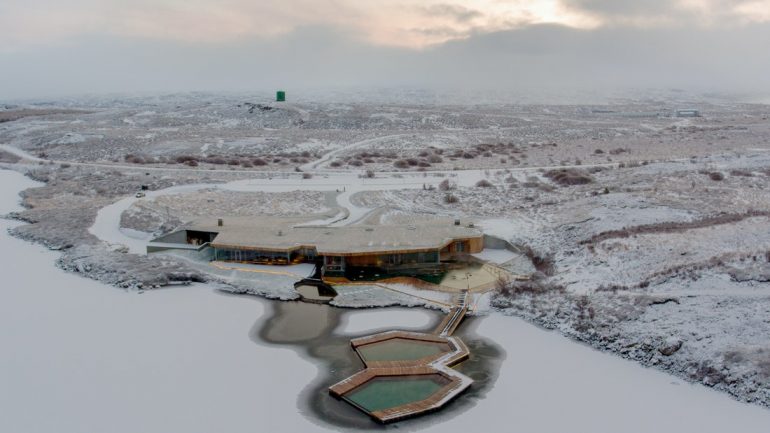
The difference in temperatures between parts of the body left exposed to the elements, and those submerged in the heat is as pleasurable as it is memorable.
The most famous of these resorts is the Blue Lagoon Spa, located on the Reykjanes Peninsula.
With its healing aquamarine waters, silica mud-baths and sophisticated amenities, the Blue Lagoon has become the go-to resort of its kind in the country.
This is especially true given its advantageous position between the capital, Reykjavík, and Keflavík International Airport.
That’s not to say there aren’t plenty of other spas of this kind located across the country.
Such establishments as Mývatn Nature Baths, Laugarvatn Fontana, Krauma Spa and Geosea Spa all promise a quieter (and cheaper) alternative, without skipping out on any of the luxuries.
3. Skiing and snowboarding in the Winter in Iceland
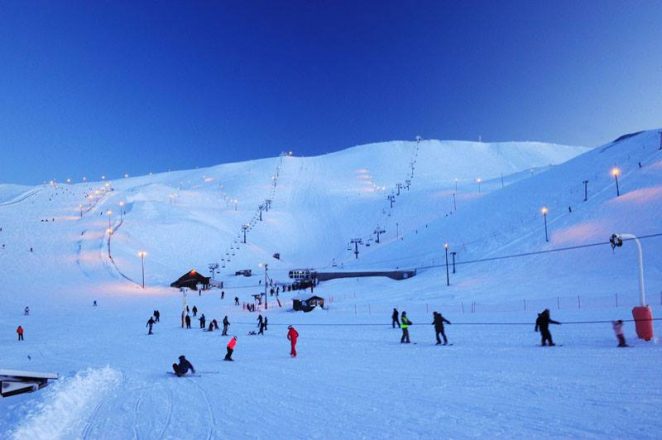
Iceland is not as famous for its winter sports as other nations like Austria or Switzerland, but that’s not to say there aren’t plenty of fun and adrenaline-packed experiences that can be undertaken on the snow here.
Skiing and snowboarding, for instance, is becoming ever more popular in Iceland with each passing year.
Open since 1974, the closest ski resort to Reykjavík is Bláfjöll—approximately 30 km southeast—and comes complete with 15 kilometres worth of skiable slopes. The resort is accessible to both beginners and experts and offers fantastic views of the surrounding mountains and ocean.
Another ski resort, Hlíðarfjall, is found nearby to Akureyri. This particular area is famous for its high-quality snow, cross-skiing opportunities and comprehensive ski school.
Both resorts offer ski lifts and rental equipment, making them an easy stop for anyone interested in tearing up Iceland’s slopes during their visit.
4. Visit Ice caves in the Winter in Iceland
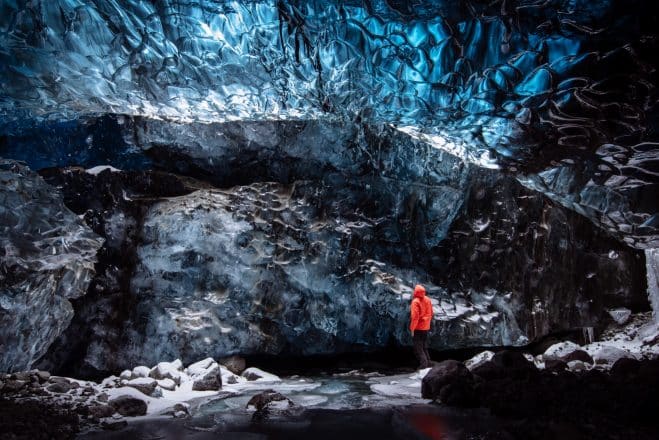
The glittering sapphire hallways of Iceland’s beloved ice caves open up during the wintertime. The most widely photographed and visited of these glacial caverns are those found within Vatnajökull glacier in South East Iceland.
However, travelling across the country, from Reykjavík or Keflavík Airport in the South West to the caves in Vatnajökull will take at least two days. Therefore, many visitors opt for the darker but equally beautiful Katla ice cave on the south coast.
The Katla ice caves are located near the beautiful Reynisfjara black sand beach. They are the only caves of this kind open in both the winter and the summer.
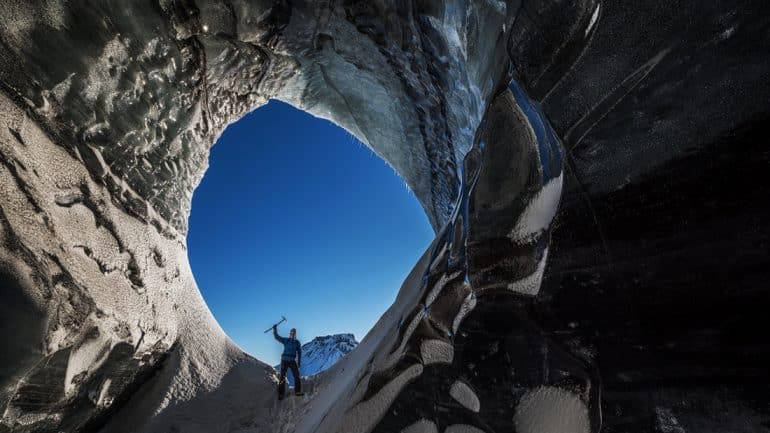
It is not permitted for guests to experience an ice cave in Iceland without taking part in a guided tour. This is because they are entirely natural attractions, thus are more than capable of changing dangers that may not be apparent to the untrained eye.
Thankfully, professional caving guides are both experienced and highly knowledgeable when it comes to visiting these shimmering, frozen grottoes.
Not only will they equipped you with all of the necessary kit—helmets, torches, crampons and, in some cases, walking poles—but they will also happily share with information about how such wonders of nature come to exist in the first place.
5. See the Northern Lights during the Winter in Iceland
The chance to see the Northern Lights, otherwise known as the Aurora Borealis, has long been one of Iceland’s biggest draws for international guests.
This enlightening cosmic phenomena only occurs at the planet’s highest latitudes, thus is an incredible and unseen novelty for the vast majority of people.
But just what makes the Northern Lights so appealing?
When the lights make an appearance, the heavens will be filled with ribbons of vibrant colour. Greens, reds, whites, and purples seem to dance together like ancient spirits, culminating in a colourful night sky that needs to be seen to be believed.
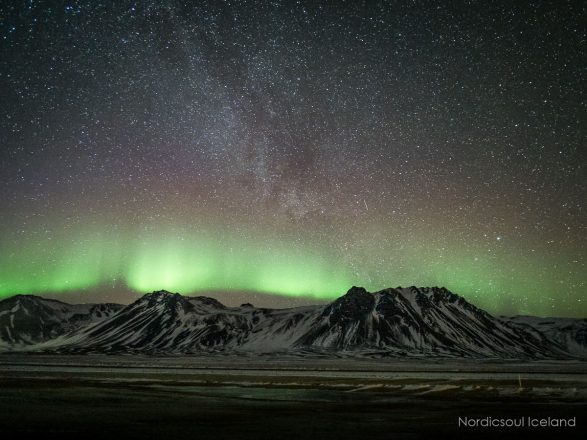
The Northern Lights occur due to protons and neutrons of a solar wind becoming trapped behind the magnetic field of our planet. When these subatomic particles react with the earth’s atmosphere, they beam out in a visible colour.
Professional meteorologists can make predictions as to when and where they might appear by looking at levels of solar activity and cloud coverage. However, remember that when it comes to nature, nothing can be certain.
If the forecast looks good, a surefire way of increasing your chances of experiencing the auroras is to avoid light pollution as much as possible. The more darkness you find, the clearer you can see the Northern Lights.
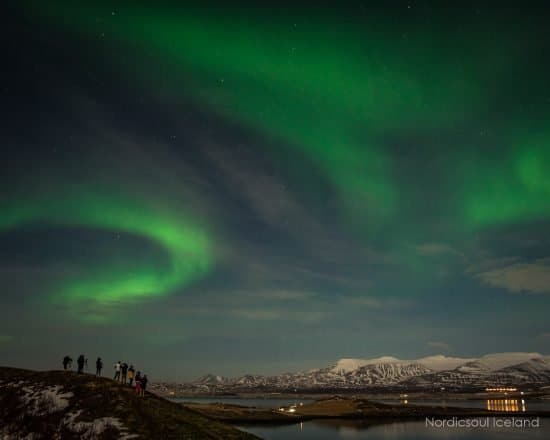
This often means travelling out beyond the Reykjavík city limits. There are no specific locations or regions in Iceland where the Northern Lights are sure to appear, so always keep your eye to the skies!
- Planning on a summer visit? Read A Visitor’s Guide to the Midnight Sun in Iceland
You can check the Northern Lights forecast on Iceland’s Met Office website.
Learn More About the Northern Lights at Aurora Reykjavik
If you are planning to see the Northern Lights, make sure to stop in at the fun and informative Aurora Reykjavik first. This establishment is found in the Grandi neighbourhood of Reykjavík, just five minutes stroll from the picturesque Old Harbour.
Their professional and friendly staff will provide you with a deeper level of insight into the science and historical interpretations of this phenomena, as well as teach you handy tips and tricks about capturing them on film.
6. Hear great new music at Iceland Airwaves
Iceland Airwaves is a popular music festival that takes place in early November each year. Its origins go back to 1999 when it was held as a one-off event in a hangar at Reykjavík Domestic Airport.
Suffice to say, the show was an enormous hit and has since evolved to be a true staple of the Icelandic cultural calendar.
Over four days—Wednesday to Saturday—both Icelandic and international acts take to a variety of stages throughout the city to showcase their latest melodic outpourings.
The main aim of the festival is to showcase new music and artists. It has in the past, elevated the careers of many unknown artists to the realms of superstardom.
Previous local acts who have played Iceland Airwaves include the likes of Ólöf Arnalds, Retro Stefson and Of Monsters and Men. Bigger names to have graced the festival include Fatboy Slim, Yoko Ono, Florence and the Machine and The Kills.
The 2020 line-up promises the appearance of the two of the biggest names in Icelandic music currently; the Queen of alternative Pop, Björk, and the recent Eurovision contenders, Daði og Gagnamagnið—famous for their hit song, ‘Think About Things’.
How to plan a trip to Iceland in the Winter
Despite its tiny population, Iceland constitutes a big landmass, thus requires some preparation for those looking to experience the very best this country has to offer.
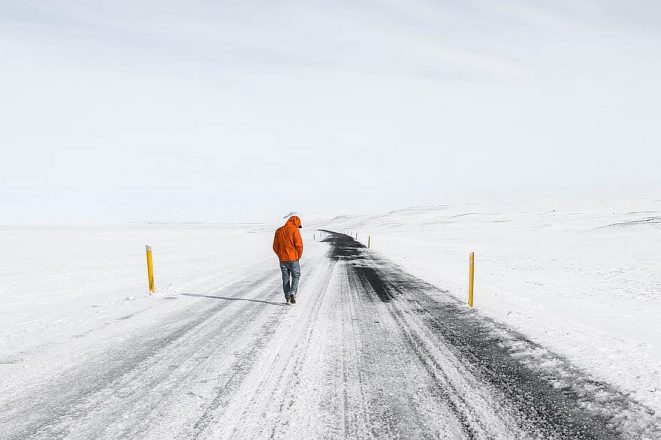
1. Establish your budget.
The first thing—and perhaps the most crucial to you personally—is to establish your budget. This will determine what you can and cannot do during travelling.
Thankfully, Traveo has several competitively priced excursions that won’t dent your wallet too dramatically.
2. Comprise an itinerary
When you have decided on how much you can afford, the next step is to work out your dream itinerary.
Make a list of what you want to see and do while in the land of ice and fire. However, it is important to try and be realistic.
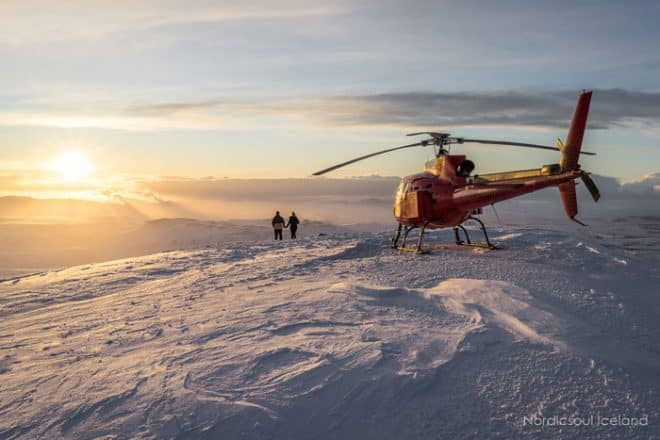
As mentioned previously, Iceland is a large country, and it takes a long time to travel between popular natural attractions. This is especially true in the winter when forced to drive at slower speeds.
Traveo prides itself on its customizability, and we will be happy to walk you through this process and make recommendations.
3. Be flexible
Remember that the weather in Iceland is very fickle, so plans will often have to be changed. Although it is best to have an idea of what you want to do, there is always a risk of roads closing or excursions being cancelled, so a flexible approach is required.
Should you be forced to alter your itinerary due to the weather, Traveo is on-call to provide you with legitimate alternatives.
4. Book your excursions and tickets to Iceland
At this point, you are free to reserve your spot on various tours and excursions, as well as book your ticket to Iceland.
No visa is required for U.S. citizens as Iceland is a party to the Schengen Agreement. However, residents in these countries will need a visa or a valid travel document.
5. Pack for your trip
This stage is, arguably, among the most important steps before driving to the airport, given that winter travel requires essential items to be in your suitcase.
What to pack for a winter trip to Iceland

Cold temperatures, strong winds and high levels of precipitation are more than capable of creating a somewhat hostile environment for those lacking the basic winter attire. This means that it is important to be well prepared when visiting Iceland.
First things first: pack a variety of warm clothing items. Woollen jumpers, thick trousers, and socks should make up the bulk of your suitcase.
You’ll also need a suitable waterproof and—if you can spare the expense—windproof coat/jacket.
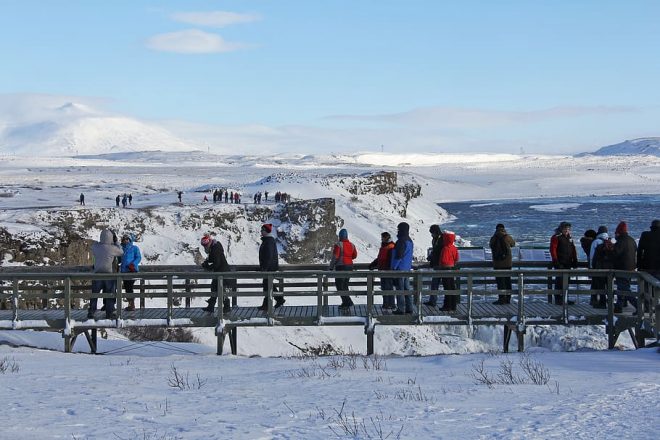
When it comes to footwear, it is always best to keep practicality and comfort in mind. Boots with a solid grip, ankle-high collar and insulated lining will always be the best bet, considering they are equally adapted to mountaineering as they are strolling through the streets of Reykjavík.
If your shoes’ grip is somewhat lacking, it is possible to buy crampons from petrol stations and supermarkets around the country. Crampons are a chain-like traction device that can be slipped over the shoe, helping the wearer to stick to terrain made slippery by ice and snow.
Once you’ve considered all of this, it’s time to think about accessories. A beanie hat or a pair of fluffy earmuffs are thought of as a staple part of the wardrobe.
When you choose gloves, make sure to grab the full-fingered style or mittens. Note that your gloves will likely get wet during your various excursions, so packing two pairs might be worth it, if only to alternate between drying them on different days.
Finally, you will need to pack a suitable scarf to protect your neck and lower face. Pull-over bandanas and full-face balaclavas will make your experience all the more comfortable, while also providing you with an excuse to look like a modern-day bank robber.
A final note on packing; make sure to avoid denim, as the material soaks up water quickly, only to have a difficult time drying out. Though you might consider yourself at the height of fashion in those skinny jeans, they’re not really appropriate for travelling around Iceland.
Just because you’re visiting Iceland in the winter doesn’t mean that everything has to be cold and frozen. Spas and geothermal hot pools are an excellent addition to your winter holiday in Iceland, and it should go without saying that a towel and swimwear will be necessary.
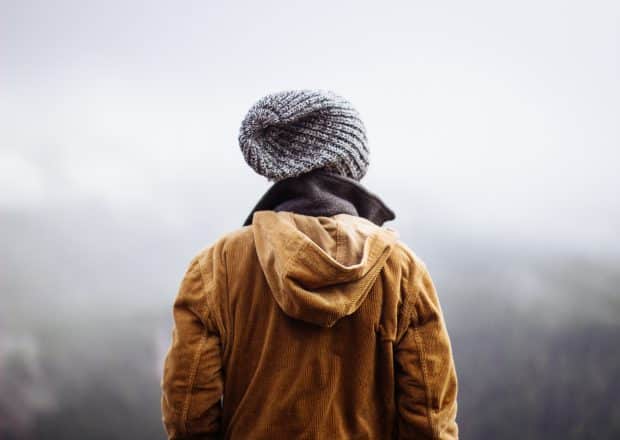
To summarise, here is a helpful checklist to aid you when packing for your winter trip to Iceland:
Pack it!
- Multiple layers of warm clothing
- Waterproof / windproof jacket or coat
- Thick socks
- Sturdy shoes
- Beanie hats, scarfs and full-finger gloves/mittens
- Swimsuit and towel
- Sunglasses
- Balaclava / Neckerchief
Leave it at home!
- Denim clothing
- Hawaiian shirts
- High heels, sandals, etc
- Fingerless gloves
- Baseball caps, fedoras, trilbies, etc
Where to stay in Iceland in the winter?
Wherever it is possible, guests should opt to stay overnight at a hotel or guesthouse. Trust us; the promise of fresh linens and a warm shower will be hugely welcome after a long day exploring Iceland’s frozen wilderness.
Many of the country’s hotels also provide the option of waking you up in the middle of the night if the Northern Lights start appearing in the sky above.
Those on a budget might have to consider a guesthouse as the vast majority of Icelandic campsites are not open during the winter. Some will stay open into October, just as the winter starts to creep in, but most will close-up shop before the snow settles.
How to spend 3 days in Iceland in the winter
Are you thinking about visiting Iceland in the winter but aren’t sure what to do? Do you only have limited time here in the land of ice and fire?
Well, you’re in luck! We’ve comprised an itinerary with suggestions on how to spend three days in Iceland.
- Be sure to check out our article 14 Best Things to See and Do in Iceland
Of course, if you’re hoping to customise the itinerary below, you can always contact us, and we will strive to make your dream winter holiday in Iceland a reality.
Day 1 – Arriving in Iceland
After landing, make your way to the capital, Reykjavík, which is located about 45 minutes from Keflavík International Airport.
En route, you’ll drive through the lava fields of the Reykjanes Peninsula. If you are doing a self-drive tour, feel free to stop to explore such locations as the Seltún geothermal area and Lake Kleifarvatn.
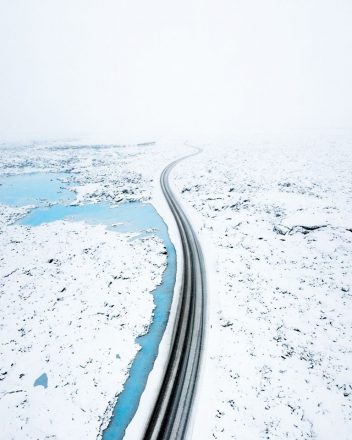
Here you will also find the Blue Lagoon. While booking a tour with Traveo, you can reserve a time-slot to visit this world-famous geothermal spa. There really is no better way to get rid of jet lag than relaxing with a complimentary silica mud mask in warm, mineral-rich waters.
Once you’ve settled into your accommodation in Reykjavík, we suggest you put on warm clothes and explore the city.
Laugavegur street is Reykjavík’s cultural centre. Here, you’ll find shops, restaurants, cafés, and colourful street art. Here are most of the city’s bars and clubs located, which is perfect for those wanting to experience Reykjavík’s vibrant nightlife.tt
Day 2 – Exploring the Icelandic Countryside
Although your time in Iceland is limited, you’ll have plenty of options when it comes to exploration.
Those visiting for the first time are recommended to visit the Golden Circle, Iceland’s most popular sightseeing route. Other locations one can easily visit in the winter are the Snæfellsnes Peninsula, West Iceland, and the South Coast to Reynisfjara black sand beach.
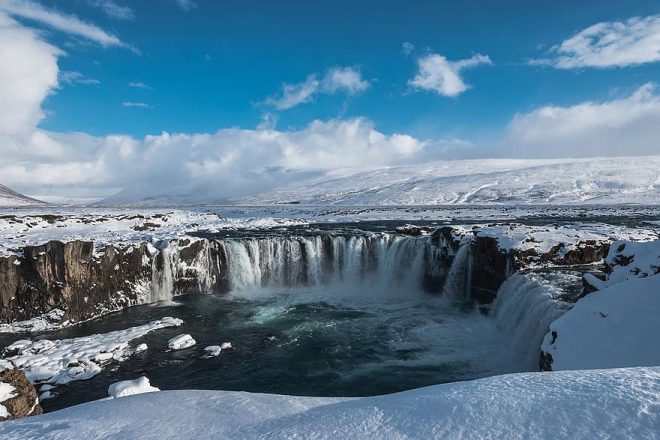
This day is also perfect for those wanting to have some adventure such as go snowmobiling, glacier hiking, or visit an ice cave.
Those with only a limited time in the country might not be able to make it all the way across Iceland to visit the short-lived ice caves in Vatnajökull National Park.
However, the natural Katla ice cave in Mýrdalsjökull glacier, the man-made ice cave tunnels in Langjökull glacier, and the ice cave exhibition in the Perlan Museum all make for a great alternative.
Day 3 – Departure
Before you make your way through the lava fields of the Reykjanes Peninsula to the airport, you could have an adventure or two in the city.
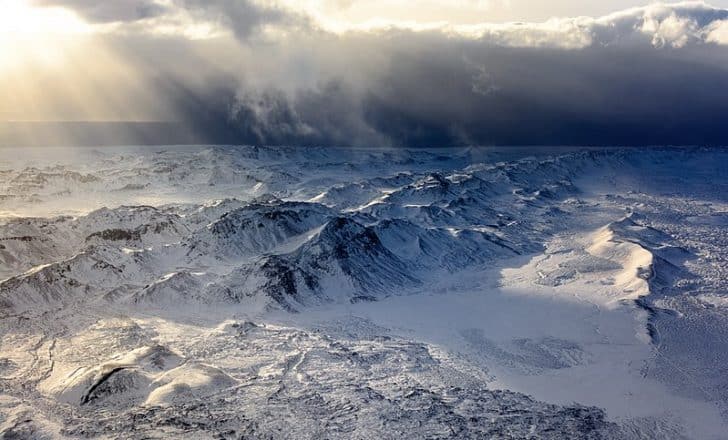
One option is to go whale watching from Reykjavík’s Old Harbour where you search for the gentle giants that make the waters of Faxaflói Bay their home. Alternatively, you can ride an Icelandic horse in the winter-landscapes in the outskirts of Reykjavík.
There are also plenty of museums in the city which cover such various topics as history, punk music, and male genitalia.
Three days are definitely not enough time to fully experience the beauty and wonders of Iceland in the winter. However, it is enough time to give you a glimpse of the stunning nature, the vibrant nightlife, and fascinating culture.
Final Thoughts about Winter in Iceland
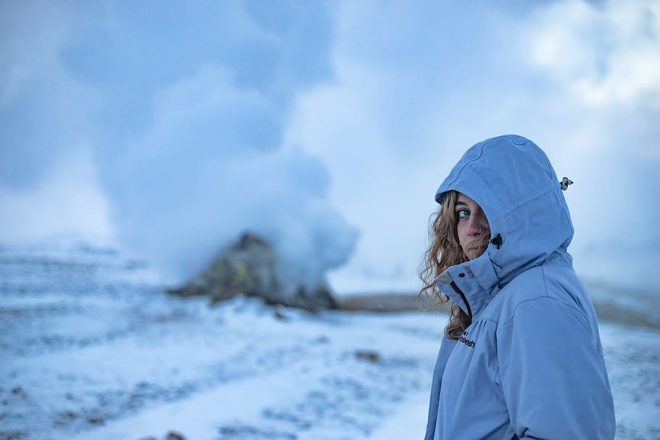
In many ways, both Iceland and the character of the Icelandic people have been defined by its long winter months.
This is as true for its literature, language and music as it is in its people choice of clothing and pleasurable pastimes.
This island’s community spirit is founded on a respect for nature, and a lingering awareness that its beauty comes hand in hand with the hardships of the prior centuries.
Winter was a struggle for survival, whereas summer offered respite, a chance of rebirth, and an opportunity to face the coming season with learned knowledge and experience.
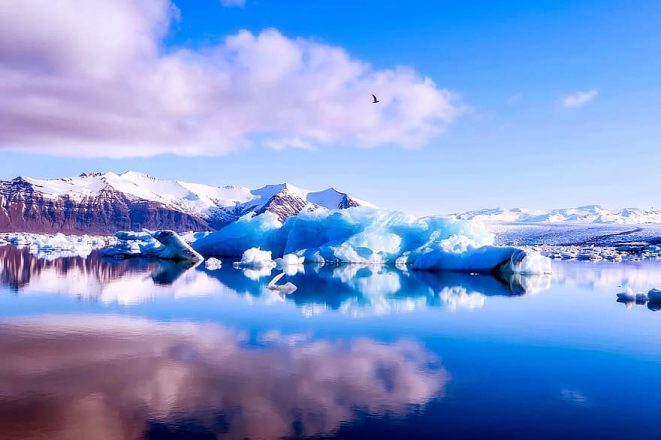
Thankfully today, with our tourist culture, modern infrastructure and easy roadways, it is the beauty of this island’s winter, rather than its potential danger, that defines one’s holiday experience here.
If you are looking to visit Iceland in the near future, then winter shows this island at its very best.
Aesthetically pure. Fearsome and undeveloped. Open to the elements.
Raw, dramatic and otherworldly.
Those willing to accept the notion that a holiday in the cold is often just as enticing as one under the sun will find that there is frankly no better option than visiting this incomparable Nordic isle.
We look forward to seeing you soon.
(And you best believe we’ll have hot chocolate and a warm fireplace at the ready.)

